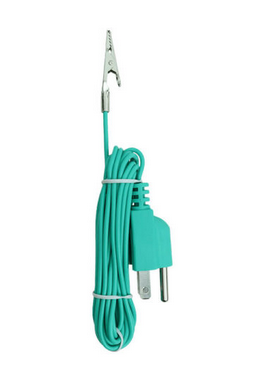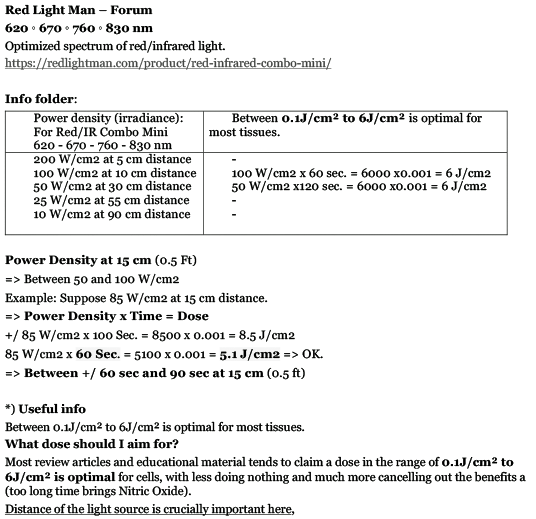How to buy the right red-light device
-
@heyman You're right, so to make a distinction:
- Non-grounded plugs in the EU only have two prongs.
- Grounded plugs in the EU have two prongs + a metal clip in the middle.

The chicken lamp is not grounded because it uses a type c plug with just two prongs.
So in order to avoid EMF emissions, you will need to either:
- find a chicken lamp socket with a grounding connection
- connect a grounded alligator clip onto the metal part of the lamp, which unfortunately will involve more cables.

Sadly, I wasn't able to find a 250w lamp socket that has a grounded plug anywhere online. Maybe there's a way to DIY a solution though.
-
@oliveoil said in How to buy the right red-light device:
There's something to be said about EMFs though. Since this lamp uses a two-prong plug, it isn’t grounded, which means it can emit high amounts of EMFs. I don't get headaches or anything but I do feel something off very slightly. So it's best to clamp an alligator cable onto the metal part of the lamp and then connect that cable to a grounded socket. Here's a reference: https://x.com/ze_rusty/status/1878041864307155275
Do you feel something off, even using the alligator cable? I have the same Bayco clamp light that DavidPS linked above and this RubyLux near infrared bulb:
https://www.amazon.com/RubyLux-NIR-Near-Infrared-Grade/dp/B00N4JE9U6/ref=sr_1_6
and I get a headache from it. Based on my recommendation, my friend got the same set-up and he loves it so it doesn’t seem to be a product issue, but a me issue. Ray mentioned getting a headache from red light too so I’ve been trying to figure out why it causes that reaction, for some of us. I thought maybe it was due to the heat it emits and how uncomfortable I felt while using it—I go topless, targeting my spine specifically (I have an old spinal injury), and would sweat profusely—but even after I started consuming something cold during my sessions, I still get a headache. I would have given up on it if it weren’t for the pain relief it gives me.
-
@Jennifer said in How to buy the right red-light device:
I thought maybe it was due to the heat it emits and how uncomfortable I felt while using it—I go topless, targeting my spine specifically (I have an old spinal injury), and would sweat profusely
With mine, I don't sweat. No heat at 30 cm / 1 ft.
From Red Light Man (small bulb)
620 ◦ 670 ◦ 760 ◦ 830 nm

Useful info
The Therapeutic Effects of Red and Near-Infrared Light (2017)
http://valtsus.blogspot.com/2017/05/the-therapeutic-effects-of-red-and-near.html
“Previous studies have shown that exposing cells to a particular wavelength of light, 670 nanometers, toward the red end of the visible spectrum, causes their energy-producing mitochondria to boost production of adenosine triphosphate, which powers the cells.” (Science 2017)
Near-infrared penetrates the tissue better than red light, so it’s more commonly used for treating body parts that are under the skin (brain, glands, joints, muscles). Visible red light is more commonly used in the treatment of wounds or skin diseases.
The right dose
Low-to-moderate doses of light are often described as stimulating and high doses as inhibitory, because some markers that can be increased by low doses of light, have been shown to decrease with excessive light doses. The exact mechanism of biphasic dose-response is not known, but it might be related to excessive formation of reactive oxygen species (ROS). -
Which wavelength?
*) Going by the studies on wavelength effectiveness (T. Karu et al.) (1), our cells absorb and use 4 "peaks" of light better than the others: 620 nm, 670 nm, 760 nm and 830 nm, +/- 15 nm. Those are the wavelengths you should try to get.- https://www.ncbi.nlm.nih.gov/pubmed/16144476
Reference: https://theskincareedit.com/2018/05/18/red-light-therapy-at-home
*) 830-840nm is for deep therapy (like pancreas and thyroid gland)
https://raypeatforum.com/community/threads/red-light-therapy-lllt-cures-hypothyroid.6815/
650 is for surface skin problems
=> Wavelength 670nm is the nearest.*) Useful info
Between 0.1J/cm² to 6J/cm² is optimal for most tissues.
What dose should I aim for?
Most review articles and educational material tends to claim a dose in the range of 0.1J/cm² to 6J/cm² is optimal for cells, with less doing nothing and much more cancelling out the benefits a (too long time brings Nitric Oxide).
Distance of the light source is crucially important here, as it determines the light power density hitting the skin. For example, using the Red Light Device at 25cm instead of 10cm would increase the application time required but cover a larger area of skin. There’s nothing wrong with using it from further away, just be sure to compensate by increasing application time.*) Way to calculate
Summary for formula: Dose = Power Density x Time in sec. x 0.001
Between 0.1J/cm² to 6J/cm² is optimal for most tissues.Let’s take an example:
Suppose the power density between 50 and 100 W/cm2
Let’s say 85 W/cm2 at 15 cm distance.
=> Power Density x Time = Dose
+/ 85 W/cm2 x 100 Sec. = 8500 x 0.001 = 8.5 J/cm2 => Too high.
85 W/cm2 x 60 Sec. = 5100 x 0.001 = 5.1 J/cm2 => OK.
=> Between +/ 60 and 90’’ at 15 cm.*) Abbreviations
Power Density (irradiance) in mW/cm² (milliwatts per centimeter squared)
Time in s (seconds)
Dose in J/cm² (Joules per centimeter squared)*) My choice: Red Light man (RLM)
For Red/IR Combo Mini: 620 - 670 - 760 - 830 nm wavelength.
NB: Between 20 and 200 W/cm2 according to the distance, for RLM.
200 W/cm2 at 5 cm distance
100 W/cm2 at 10 cm distance
50 W/cm2 at 30 cm distance
25 W/cm2 at 55 cm distance
10 W/cm2 at 90 cm distance*) Another example
- Let’s suppose the power 50 W/cm2 at 30 cm distance. Which time?
50 W/cm2 x 120 sec. = 6000 x 0.001 = 6 J/cm2 => OK
50 W/cm2 x 60 sec. = 3000 x 0.001 = 3 J/cm2 => OK
NB: Remember: between 0.1J/cm² to 6J/cm² is optimal for most tissues. The distance impacts the radiance (the extent of the irradiated surface).
Conclusion: 60 to 120 seconds at 30 cm distance. No longer.
- https://www.ncbi.nlm.nih.gov/pubmed/16144476
-
Thank you for the thorough explanation, @LucH. It’s very helpful. I sit at a distance of roughly 61 cm for 10 minutes and usually feel the headache starting within 5 minutes so I’ll try adjusting the distance and time, based on the information you gave me. Thanks again.

-
@Jennifer said in How to buy the right red-light device:
Do you feel something off, even using the alligator cable?
Yes, I do feel a slight tingling sensation or buzz when my face is near it. It is most certainly the EMFs. I haven't tried the grounded alligator cable on it yet, so I can't tell you with full certainty, but it should work, at least in theory.
Since I've been enjoying lots of sunlight these past few months, I haven't used the red light a lot. I will try to DIY grounded version of this lamp soon.
-
@oliveoil
I've been through that long ago and bought 3-core-cables, suitable switches, groundable sockets or groundable socket covers. I had also replaced the textile cable of a drop light and drilled a hole into the socket bulb to attach a grounding lead to. Makes a big difference to how my head feels and how much calmer I remain whitin an c. 8ft wide circle around it. -
Interesting. Thank you for sharing, @oliveoil.

-
 M Mossy referenced this topic on
M Mossy referenced this topic on
-
Jennifer said:
"Thank you for the thorough explanation, @LucH. It’s very helpful. I sit at a distance of roughly 61 cm for 10 minutes and usually feel the headache starting within 5 minutes so I’ll try adjusting the distance and time, based on the information you gave me."@Jennifer
What is the optimal duration of red light use?
Typical therapeutic doses for PBM range from 3 to 10 J/cm² for the thyroid, so the 5-minute exposure seems to be in the sweet spot. A 10-minute exposure could push the dose too high. Not advised.
Recommendation: Start with a low dose and adjust accordingly if you feel positives effects (…).
Context:
Energy level is 50 mW/cm² at a 30 cm distance.
Suggested Protocol (non-medical, general PBM logic)
• Start: 2.5 min (≈7.5 J/cm²) at 30 cm, 3×/week.
• Adapt: If no effect and well tolerated, increase toward 4–5 min (≈12–15 J/cm²).Note 1: Examples, issued from a thorough research
Wavelength & Penetration Basics
- 670 nm (red light):
Higher absorption by melanin & hemoglobin.
Penetrates ~5–10 mm effectively (depth in the body)
Best for superficial tissues (skin, mucosa, retina).
- 810 nm (near-infrared light):
Less absorbed by blood & melanin, more scattered.
Penetrates 15–30 mm+ (depending on tissue density).
Better for deeper tissues (thyroid, joints, and muscles).Practical quick-use recommendations
• Thyroid (preferred 810 nm): Start surface 5–7.5 J/cm² (100–150 s) 2–3×/week. Increase slowly toward 10 J/cm² (200 s) only if well tolerated.
• Back pain / deep arthrosis (use 810 nm): Aim for surface 8–12 J/cm² (160–240 s) to deliver a few J/cm² to deep tissue; 2–3×/week.
• Retina (use 670 nm): Use clinically validated retinal protocols (typical reported exposures are short; many studies use low-to-moderate surface doses). Do not irradiate eyes without device and protocol cleared for ocular use and without following eye-safety guidelines from manufacturer.
• Because PBM has a biphasic (inverted-V) response, prefer starting lower and observing response before increasing dose.Note: 5–7.5 J/cm² (100–150 s) at 30 cm distance with 50 J/cm2 doesn’t mean you’re going to absorb the whole thing. Between 30 – 50% with IR light at optimal range: 810 nm.
See full post at:
https://mirzoune-ciboulette.forumactif.org/t2136-ir-light-how-much-how-long-which-wavelength#30380 -
@LucH, thank you for the information. I cut my sessions down to 5 minutes after my last post, but it was still triggering headaches so I took a break from it and made some diet tweaks that ended up reducing my back pain far better than red light therapy.